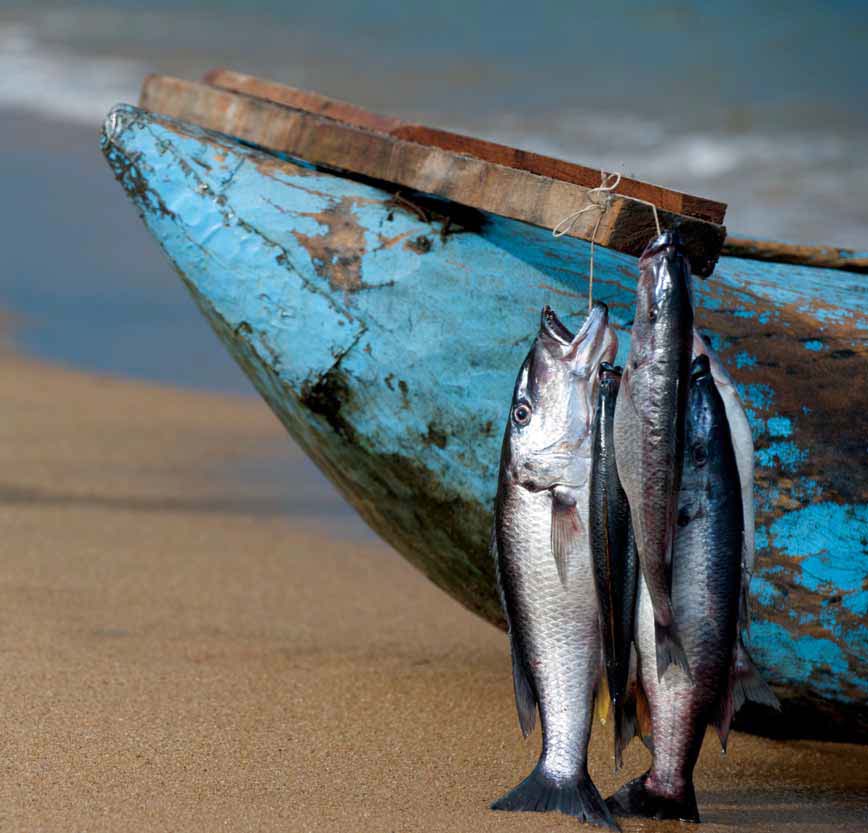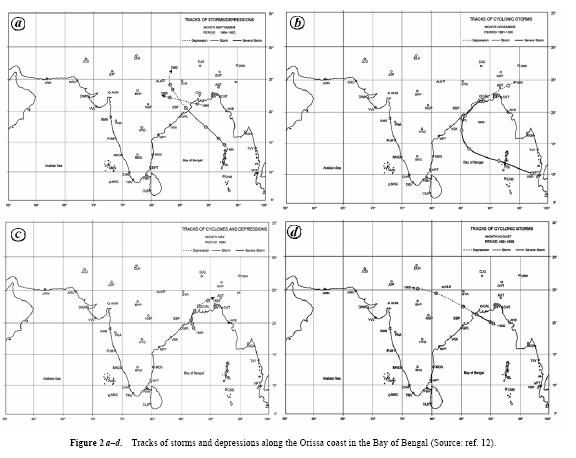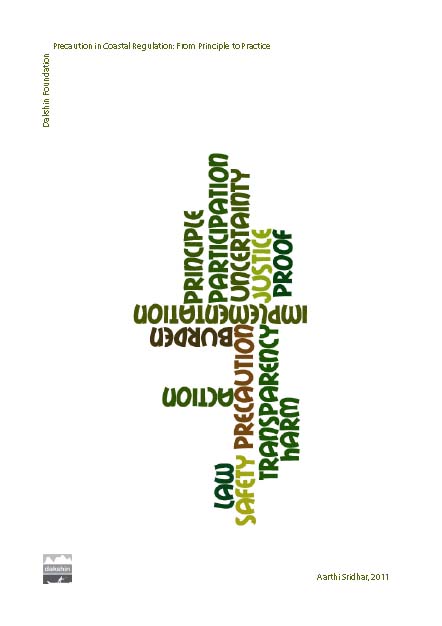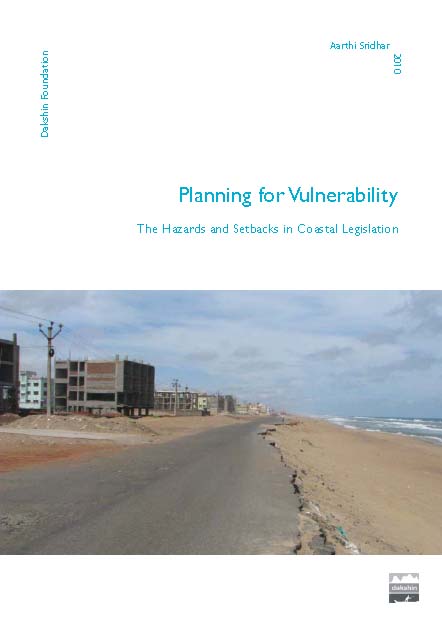Oceans and Coasts
Blue harvest – Inland fisheries as an ecosystem service – A report by UNEP
Posted on 24 Aug, 2011 11:34 AM This report by United Nations Environment Programme (UNEP) reviews the importance of inland fisheries as an ecosystem service, the pressures upon them, and management approaches to sustain them and thus helps inform future approaches to conservation and management of freshwater ecosystems.
This report by United Nations Environment Programme (UNEP) reviews the importance of inland fisheries as an ecosystem service, the pressures upon them, and management approaches to sustain them and thus helps inform future approaches to conservation and management of freshwater ecosystems.
There is an urgent need for major investment in policy and management approaches that address the direct and indirect drivers of aquatic ecosystem degradation and loss of inland fisheries taking into account their role in sustainable development and human well being. The UNEP Ecosystem Management Programme (UNEP-EMP) provides an effective framework for pursuing this challenge.
Fine-scale responses of phytoplankton to freshwater influx in a tropical monsoonal estuary following the onset of southwest monsoon – A paper in Journal of Earth System Science
Posted on 09 Aug, 2011 09:53 PMThis paper in the Journal of Earth System Science deals with a study by National Institute of Oceanography (NIO), Goa to investigate the influence of monsoonal rainfall on hydrographic conditions in the Mandovi River of India. The study was undertaken at a location approximately 2 km upstream of the mouth of the estuary.
Role of cyclones and other factors in the decline of the ports of northern Orissa - Current Science
Posted on 30 Jul, 2011 01:23 AM This article published in Current Scienc
This article published in Current Scienc
Chennai coastal carnival for children, CEE, SAARC, August 4 – 6, 2011, Chennai
Posted on 15 Jul, 2011 03:51 PM Organizers:
Organizers:
- Centre for Environment Education (CEE)
- South Asian Association for Regional Cooperation (SAARC)
Venue: Bharath Scout and Guide campus, Wenlock Park (opposite Triplicane Railway Station, Marina Beach, Chennai
Centre for Marine Living Resources and Ecology is looking for junior research fellows at Cochin – Apply by August 2, 2011
Posted on 15 Jul, 2011 01:06 PMCentre for Marine Living Resources and Ecology (CMLRE), Cochin under the Ministry of Earth Sciences, Govt. of India has been organizing, co-ordinating and promoting ocean development activities in the country which inter-alia include mapping of the living resources, preparing inventory of commercially exploitable living marine resources, their optimum utilization through ecosystem management and R&D in basic sciences on Marine Living Resources and Ecology.
Taking steps toward marine and coastal ecosystem based management: An introductory guide by UNEP
Posted on 25 Jun, 2011 09:28 AMAn important aim of this guide is to facilitate the implementation of UNEP’s overarching Ecosystem Management Programme and new Marine and Coastal Strategy in countries and regions in line with its Medium Term Strategy 2010-13.
Precaution in coastal regulation - From principle to practice – A report by Dakshin Foundation
Posted on 21 Jun, 2011 11:45 AM The decision to act or not act, and further how to act in the face of unknowns or uncertainties is the subject matter of the precautionary principle (PP). It is against this historical backdrop of unknowns in environmental governance that the present study on the precautionary principle was conducted.
The decision to act or not act, and further how to act in the face of unknowns or uncertainties is the subject matter of the precautionary principle (PP). It is against this historical backdrop of unknowns in environmental governance that the present study on the precautionary principle was conducted.
The present framework for environmental governance provides a number of areas where precaution can and must be applied. In addition to these areas, the present report is the outcome of a descriptive study that shows the extent to which key elements of the precautionary principle are embedded in the specific case of two environmental laws related to coasts. The study examines key areas of the clearance continuum (law-making, clearance and monitoring) through a single broad question: To what extent is the approach of precaution embedded in decision-making under the CRZ Notification 1991 and the Water Act, 1974?
Sridhar attempted to examine this question on a continuum that examines a) the text of the law, b) the conditions under which projects are cleared or rejected and c) issues related to the monitoring of these conditions. The Asia and Pacific Workshop Report of the Precautionary Principle Project declared that there are both explicit and implicit uses of the precautionary principle. It states that there are some instances where the PP’s application is explicit and unambiguous whereas in other decisions the PP is implicit. They also raise an important point that to actually determine whether a decision was indeed precautionary or not (where it is not explicit) requires an examination of the context and motivations for decisions and management interventions.
Sagar - A pocketbook on oceans with special reference to waters around India
Posted on 13 Jun, 2011 03:12 PMThe pocket book provides an overview of the oceans,their formation, characteristics, and the dynamics that determine their evolution. It also contains information on how the interested reader can pursue these topics further through books and websites.
The pocket book is divided into the following chapters:
Planning for vulnerability - The hazards and setbacks in coastal legislation – A report by Dakshin Foundation
Posted on 22 May, 2011 06:16 PM The law pertaining to coastal spaces – the Coastal Regulation Zone (CRZ) Notification, 1991 specifically decides what people can and cannot do on the coastal stretches of the country.
The law pertaining to coastal spaces – the Coastal Regulation Zone (CRZ) Notification, 1991 specifically decides what people can and cannot do on the coastal stretches of the country.
Harbouring trouble - The social and environmental upshot of port growth in India – A report by Dakshin Foundation
Posted on 22 May, 2011 12:04 PMBesides its own impact, port development is often accompanied by other activities such as the location of industries, power plants, railway lines, highways, hotels, SEZs, residential complexes, etc., that have multiple detrimental impacts – environmental, social and erosion related.





